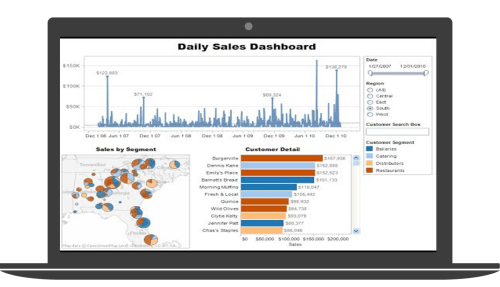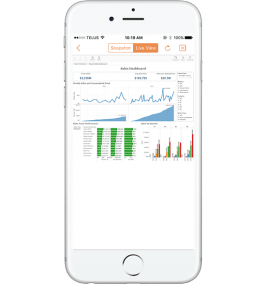YOUR FILES ARE ENCRYPTED! To decrypt your files you need to obtain the private key. To obtain the private key, you need to pay 300 USD.
Any attempt to remove or damage this software will lead to the immediate destruction of the private key by server.
 This message is one that no business owner wants to see pop up on their office computer screen. Ransomware – a nasty and costly virus (or malware) that locks down computers and encrypts data until money (or a ransom) is sent – is not going anywhere. In fact, it seems to be such an epidemic these days as there are new malwares popping up and more victims paying up, which includes individuals, small and large organizations, hospitals, universities, government agencies and more.
This message is one that no business owner wants to see pop up on their office computer screen. Ransomware – a nasty and costly virus (or malware) that locks down computers and encrypts data until money (or a ransom) is sent – is not going anywhere. In fact, it seems to be such an epidemic these days as there are new malwares popping up and more victims paying up, which includes individuals, small and large organizations, hospitals, universities, government agencies and more.
Our team of IT experts has already seen and helped businesses recover from ransomware and other malware attacks and in fact, we’ve recently been hit as well. What has saved us and our customers from incurring high and sometimes damaging costs is the fact that we were all well prepared for such an incident. (Read our previous blog called “Ransomware Detected”)
How? Let me further explain about the costs that businesses can incur from ransomware and what to do to recover easily and quickly from this cyberattack.
First and foremost, it’s important to know that anyone can get hit by ransomware. It is not only large, successful organizations or government agencies. It can be small businesses or individuals. Secondly, it’s criticial that business owners get rid of the thought that “it won’t happen to me or my business – ransomware has been around for years and I’ve never had an incident like that”. This is such a dangerous thought. It may never have happened before but it doesn’t mean that it can’t happen in the future. Cyber criminals are only getting smarter and more powerful. Ransomware has become a billion dollar industry, where about 4,000 cyberattacks are launched every single day (Globe and Mail, May 2017)
Unfortunately, even if managers or IT departments do their best to educate their employees on malware and how to identify suspicious emails, links or attachments, we should never take the chance that one bad email won’t slip through. Ransomware can halt business operations immediately and this is very dangerous. Over the last couple of years, on average, ransomware has cost small businesses over $100,000 per attack due to downtime (some companies have been hit more than once in the span of a few months!!). Most people think that the ransom ($) is the biggest cost that comes from a ransomware attack. However, there are a lot more damages that can be incurred, such as;
- Loss of revenue due to downtime
- Lost customers and damaged reputation
- Loss of productivity
- The cost of hiring IT experts to restore your systems in the days following an attack
- Data loss (!!)
So, even if the ransom is paid rather quickly, it could still take up to a week or more to remove the infection from your systems and get back up and running. (Do you know how much money your company will lose if you are down for a week?) One law firm in the U.S. suffered 3 months of downtime while their systems remained locked! Most smaller companies would not survive this. On top of all of this, companies may never be able to retrieve some of their sensitive business data.
Therefore, the downtime and data loss that companies suffer are two of the biggest threats to a company if attacked by ransomware or any malware. What’s also important to note is that even though the original ransom may be a measly $300 USD, cyber criminals have no morals and can increase this amount at any time and for any reason. For example, hospitals and universities hold highly sensitive information. Cybercriminals are aware that they would pay anything to retrieve their data. Their ransoms are known to be in the thousands – some stories have reported ransoms of $20,000. What’s worse is that if they see how quickly a company pays up the first time they get hit, if they get hit a second time the amount will increase exponentially. It’s a dangerous game and it’s not one any business owner would want to play.
What’s worse, is that most recently, the FBI has urged companies NOT to pay the ransom if their computers get infected. “Paying a ransom doesn’t guarantee an organization that it will get its data back – we’ve seen cases where organizations never got a decryption key after having paid the ransom”, said FBI Cyber Division Assistant Director James Trainor.” (CNN, July 2017)
The Business Continuity Solution to Ransomware
The BEST way to protect your data and company from this type of attack is to implement a Business Continuity and Disaster Recovery plan and software solution, like QBR, paired with educating your employees. They need to know what to look out for; how to identify suspicious emails, attachments and links and once identified to report them to their IT team right away. If anything should occur, the IT team will have a plan of action ready and will deploy a bare metal restore to remove all traces of the virus and go back in time. Depending on how often you chose to backup your data, all that may be lost is an hour or so of data. After that, everything can be back to normal and operations can continue as if nothing ever happened.
Therefore, implementing a Business Continuity solution like QBR truly is a small price to pay to ensure that your data is safe and your company can survive a Ransomware attack, without incurring downtime. Our customers view this service as their insurance policy instead of an added cost to their business. They would rather pay a monthly service to protect their data than take the risk of getting hit by a malware and having to incur major damages.

 It’s not uncommon to find large and small companies either using multiple separate systems or using Excel Spreadsheets and emails to run the business. Most likely, what you’ll find at these companies are employees relying heavily on their emails to track and manage important files and information, miscommunication between departments, inaccurate and outdated data being shared, and more inefficiencies.
It’s not uncommon to find large and small companies either using multiple separate systems or using Excel Spreadsheets and emails to run the business. Most likely, what you’ll find at these companies are employees relying heavily on their emails to track and manage important files and information, miscommunication between departments, inaccurate and outdated data being shared, and more inefficiencies. For many business owners or managers, making the decision to implement a new software system is a difficult one to make. Oftentimes, the changes and risks that come with a software implementation can discourage those business managers who are looking to streamline their company’s processes and improve overall efficiency with a new system. There’s a ton of information out there on the advantages of using an efficient, up-to-date
For many business owners or managers, making the decision to implement a new software system is a difficult one to make. Oftentimes, the changes and risks that come with a software implementation can discourage those business managers who are looking to streamline their company’s processes and improve overall efficiency with a new system. There’s a ton of information out there on the advantages of using an efficient, up-to-date 

 System integration is the process of bringing multiple systems or applications into one, allowing them to work together. The goal is so that every system that is being used at the company, be it your CRM, Enterprise Resource Planning (ERP), Warehouse Management, B2C eStore, EDI, etc., will be using a single database. This reduces the need to constantly update different systems and resort to many hours of manual data entry. In today’s fast-paced business environment, it’s crucial that companies have management applications that can speak with one another and share information between them. This results in better visibility and accessibility of information, faster decision-making, reduced redundancies, increased efficiency and more.
System integration is the process of bringing multiple systems or applications into one, allowing them to work together. The goal is so that every system that is being used at the company, be it your CRM, Enterprise Resource Planning (ERP), Warehouse Management, B2C eStore, EDI, etc., will be using a single database. This reduces the need to constantly update different systems and resort to many hours of manual data entry. In today’s fast-paced business environment, it’s crucial that companies have management applications that can speak with one another and share information between them. This results in better visibility and accessibility of information, faster decision-making, reduced redundancies, increased efficiency and more. Do you have your own eCommerce Store, perhaps built with Shopify, or sell your goods online through Amazon, Cabela’s, eBay, etc.? If so, we are quite certain you’ve already been in discussion about how to best exchange data between you and your Trading Partner(s) or between your eCommerce platform and your internal software management system (i.e. your ERP system, CRM (Salesforce)…). In some cases, you may not have much of a choice, as some Trading Partners send their communication requirements prior to beginning a business relationship. For example, partners like Cabela’s or Amazon often push suppliers to be EDI compliant. At that point, it’s time to get in contact with an EDI provider to learn more about this process for your specific business needs.
Do you have your own eCommerce Store, perhaps built with Shopify, or sell your goods online through Amazon, Cabela’s, eBay, etc.? If so, we are quite certain you’ve already been in discussion about how to best exchange data between you and your Trading Partner(s) or between your eCommerce platform and your internal software management system (i.e. your ERP system, CRM (Salesforce)…). In some cases, you may not have much of a choice, as some Trading Partners send their communication requirements prior to beginning a business relationship. For example, partners like Cabela’s or Amazon often push suppliers to be EDI compliant. At that point, it’s time to get in contact with an EDI provider to learn more about this process for your specific business needs. We’ve all heard our fair share of nightmare stories when it comes to new software, more specifically Enterprise Resource Planning (ERP), implementations. What we don’t often hear, however, are the mistakes that were made during this project that could have been avoided. In many of these stories, the blame is put on the Software Provider or on employees who resist change and the system. However, there are some mistakes that business executives make that can affect the outcome of an ERP software implementation.
We’ve all heard our fair share of nightmare stories when it comes to new software, more specifically Enterprise Resource Planning (ERP), implementations. What we don’t often hear, however, are the mistakes that were made during this project that could have been avoided. In many of these stories, the blame is put on the Software Provider or on employees who resist change and the system. However, there are some mistakes that business executives make that can affect the outcome of an ERP software implementation. It’s already nearing the end of 2016. Crazy how fast time flies! For many people, this time is the busiest, filled with corporate events, family gatherings, holiday shopping, vacations and more. For many businesses, especially in the retail industry, it’s also one of their busiest times of the year. However, there are those industries or companies where December is a quiet month, making it the perfect time to look ahead and plan for the upcoming year. It’s when executives can finally set aside a few hours or days to establish and finalize next year’s budgets, prioritize upcoming projects, assess employee performance and review goals and benchmarks for the following year. What our consultants always encourage is to also set some time aside to review business processes and determine which ones aren’t working well anymore. For example, are you noticing an increase in unhappy customers, an increase in manual data entry, duplicated work, an increase in costs, missed deadlines, frustrated, and unproductive employees…? If so, it’s definitely time to improve the processes that don’t work and are leading to these problems.
It’s already nearing the end of 2016. Crazy how fast time flies! For many people, this time is the busiest, filled with corporate events, family gatherings, holiday shopping, vacations and more. For many businesses, especially in the retail industry, it’s also one of their busiest times of the year. However, there are those industries or companies where December is a quiet month, making it the perfect time to look ahead and plan for the upcoming year. It’s when executives can finally set aside a few hours or days to establish and finalize next year’s budgets, prioritize upcoming projects, assess employee performance and review goals and benchmarks for the following year. What our consultants always encourage is to also set some time aside to review business processes and determine which ones aren’t working well anymore. For example, are you noticing an increase in unhappy customers, an increase in manual data entry, duplicated work, an increase in costs, missed deadlines, frustrated, and unproductive employees…? If so, it’s definitely time to improve the processes that don’t work and are leading to these problems.


 We are certain that demand for these management solutions will only increase, as executives are actively looking to transform their businesses using the latest technologies on the market. We predict that mobile business applications will make this list next year, as business owners are looking to supply their on-site teams with access to their management system to input and review real-time data. Modern, visually appealing, easy to use applications don’t just have to be for personal use; companies should be benefiting from these types of applications as well! One thing is for certain; businesses are looking beyond the brand name when it comes to software systems and taking the time to ensure that the Software Provider and offerings are a good fit for their company.
We are certain that demand for these management solutions will only increase, as executives are actively looking to transform their businesses using the latest technologies on the market. We predict that mobile business applications will make this list next year, as business owners are looking to supply their on-site teams with access to their management system to input and review real-time data. Modern, visually appealing, easy to use applications don’t just have to be for personal use; companies should be benefiting from these types of applications as well! One thing is for certain; businesses are looking beyond the brand name when it comes to software systems and taking the time to ensure that the Software Provider and offerings are a good fit for their company.